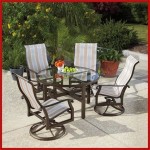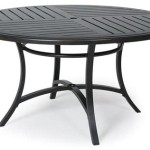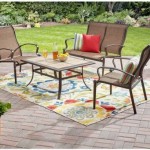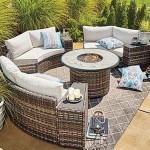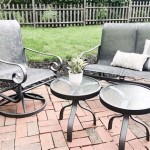Elevating Outdoor Living: Patio Design Ideas
The patio serves as an extension of the home, a transitional space bridging the indoors and the outdoors. A well-designed patio can significantly enhance the quality of life, providing a space for relaxation, entertainment, and connection with nature. The design of a patio should be carefully considered, taking into account factors such as the intended use, the surrounding environment, and the homeowner's personal style. Exploring diverse patio design ideas can help create an outdoor living space that is both functional and aesthetically pleasing.
Successful patio design involves a harmonious blend of hardscaping and softscaping elements. Hardscaping encompasses the structural components, such as paving materials, walls, and overhead structures. Softscaping includes the landscaping features, such as plants, trees, and flowers. Balancing these elements is crucial for creating a cohesive and inviting outdoor space.
Selecting the Right Paving Materials
The choice of paving material significantly impacts the overall look and feel of a patio. Several options are available, each with its unique advantages and disadvantages. Concrete pavers are a popular choice due to their durability, versatility, and affordability. They come in a wide range of shapes, sizes, and colors, allowing for numerous design possibilities. Natural stone, such as flagstone, bluestone, and travertine, offers a more natural and elegant aesthetic. However, natural stone tends to be more expensive and may require more maintenance than concrete pavers. Brick is another classic paving material that provides a warm and rustic charm. It is durable and relatively low-maintenance, but the color options are limited. Gravel is a cost-effective option that can create a casual and natural look. However, it can be less comfortable to walk on and may require periodic replenishment.
When selecting paving materials, consider the climate, the style of the home, and the intended use of the patio. For example, in areas with harsh winters, it is important to choose a material that is resistant to freezing and thawing. For a modern home, concrete pavers or large-format porcelain tiles may be a suitable choice. If the patio will be used primarily for dining and entertaining, a smooth and level surface is essential.
The layout of the paving materials can also significantly impact the design. A simple grid pattern is a classic and timeless choice, while more intricate patterns, such as herringbone or basketweave, can add visual interest. Consider incorporating borders or accents using different materials or colors to define the space and create focal points.
Creating Comfortable Seating Areas
Comfortable seating is essential for any patio designed for relaxation and socializing. The type of seating will depend on the intended use of the patio and the homeowner's personal preferences. Outdoor sofas and sectionals provide ample seating for larger groups and are ideal for creating a cozy and inviting atmosphere. Lounge chairs and ottomans are perfect for relaxing and sunbathing. Dining tables and chairs are necessary for outdoor dining. Benches can provide additional seating and can also be used to define the perimeter of the patio.
When selecting outdoor furniture, consider the materials, the durability, and the style. Teak, cedar, and redwood are durable and weather-resistant woods that are commonly used for outdoor furniture. Aluminum and wrought iron are also popular choices. Consider using cushions and pillows to enhance comfort and add color and style to the seating area. Choose fabrics that are specifically designed for outdoor use and are resistant to fading, mildew, and water damage.
Arranging the seating area strategically can enhance the functionality and aesthetics of the patio. Create conversation groupings by placing chairs and sofas facing each other. Use rugs to define the seating area and anchor the furniture. Consider adding a coffee table or side tables for convenience. Integrate the seating area with the surrounding landscape by adding plants and flowers.
Incorporating Shade and Shelter
Providing shade and shelter is crucial for making a patio comfortable and usable throughout the year. The amount of shade and shelter needed will depend on the climate and the orientation of the patio. Awnings are a retractable option that can provide shade on demand. They are available in a variety of styles and colors to complement the design of the home. Pergolas are a more permanent structure that can provide partial shade. They can be covered with climbing plants, such as wisteria or grapevines, to create a natural and beautiful canopy. Gazebos are a freestanding structure that provides complete shade and shelter. They can be used as a focal point in the landscape and can provide a more formal and elegant look.
Trees and shrubs can also provide shade and shelter. Deciduous trees provide shade in the summer and allow sunlight to penetrate in the winter. Consider planting trees strategically to block the hot afternoon sun. Shrubs can be used to create privacy screens and windbreaks. Vines can be trained to grow on walls or fences to provide shade and visual interest.
The design of the shade and shelter structure should complement the style of the home and the overall design of the patio. Consider the materials, the color, and the scale of the structure. Ensure that the structure is properly anchored and can withstand wind and weather. Integrate the shade and shelter structure with the surrounding landscape by adding plants and flowers.
Adding Lighting for Ambiance and Safety
Lighting is an essential element of patio design that enhances both ambiance and safety. Proper lighting allows the patio to be enjoyed during evening hours and creates a warm and inviting atmosphere. Different types of lighting can be used to achieve different effects. String lights are a popular choice for creating a festive and whimsical atmosphere. They can be hung from trees, pergolas, or fences. Path lights are used to illuminate walkways and prevent tripping hazards. They can be solar-powered or hardwired. Spotlights are used to highlight architectural features or landscaping elements. They can be used to create dramatic lighting effects. Landscape lighting illuminates the surrounding garden and extends the visual space of the patio.
When choosing lighting fixtures, consider the style of the patio and the desired effect. Use warm-toned lights to create a cozy and inviting atmosphere. Use cool-toned lights to create a more modern and sophisticated look. Consider using dimmers to control the intensity of the lighting. Install the lighting fixtures in strategic locations to maximize their effectiveness. Ensure that all electrical connections are properly installed and protected from the elements.
The placement of the lighting is as crucial as the selection of the fixtures. Uplighting trees or architectural features can create dramatic shadows and highlights. Downlighting can illuminate walkways and seating areas. Combining different types of lighting can create a layered and visually interesting effect. Consider using motion-sensor lights for added security.
Incorporating Water Features
Water features introduce a soothing and refreshing element to any patio design. The sound of running water can create a tranquil and relaxing atmosphere. Water features can also attract birds and other wildlife, adding to the natural beauty of the outdoor space. Fountains are a classic water feature that comes in a variety of styles and sizes. They can be freestanding or integrated into a wall or pond. Ponds are a larger water feature that can be stocked with fish and plants. They can be a focal point in the landscape and can provide a habitat for wildlife. Waterfalls are a dramatic water feature that can add movement and sound to the patio. They can be natural or artificial. Birdbaths are a simple and inexpensive water feature that can attract birds to the patio. They should be shallow and easy to clean.
When selecting a water feature, consider the size of the patio and the overall design. A large pond may not be suitable for a small patio, while a small birdbath may be insignificant in a large space. Consider the maintenance requirements of the water feature. Fountains and ponds require regular cleaning and maintenance to prevent algae growth. Integrate the water feature with the surrounding landscape by adding plants and rocks. Ensure that the water feature is properly installed and that all electrical connections are protected from the elements.
The location of the water feature is also important. Placing a fountain near a seating area can create a relaxing ambiance. A waterfall can be used to mask unwanted noise. A pond can be placed in a sunny location to encourage plant growth. Consider the visual impact of the water feature from different vantage points on the patio.
Adding Outdoor Kitchens and Dining Areas
An outdoor kitchen can transform a patio into a fully functional outdoor living space. It allows for cooking and entertaining outdoors, eliminating the need to constantly go back and forth between the house and the patio. An outdoor kitchen can range from a simple grill and countertop to a fully equipped kitchen with a sink, refrigerator, and oven. The design of the outdoor kitchen should be functional and aesthetically pleasing. Consider the space available, the budget, and the intended use of the kitchen. A grill is the essential element of any outdoor kitchen. Choose a grill that is durable and provides adequate cooking space. A countertop provides a surface for food preparation and serving. Choose a countertop material that is weather-resistant and easy to clean. A sink provides a convenient place to wash hands and dishes. A refrigerator keeps food and drinks cold. An oven allows for baking and roasting outdoors.
When designing an outdoor dining area, consider the number of people that will be using the space and the type of meals that will be served. A rectangular table is ideal for formal dinners, while a round table is better for casual gatherings. Chairs should be comfortable and durable. Consider adding an umbrella or a pergola to provide shade. Choose tableware and linens that are appropriate for outdoor use.
The layout of the outdoor kitchen and dining area should be functional and efficient. Position the grill close to the countertop and sink for easy food preparation. Place the dining table within easy reach of the kitchen. Provide adequate lighting for evening use. Consider adding a bar area for serving drinks.
Creating Privacy and Defining Boundaries
Privacy is an important consideration for many homeowners when designing a patio. Privacy can be achieved through various methods, including fences, walls, hedges, and screens. Fences provide a solid barrier that can block views and noise. They can be made of wood, vinyl, or metal. Walls are a more permanent structure that can provide a higher level of privacy. They can be made of brick, stone, or concrete. Hedges are a natural way to create privacy. Choose evergreen hedges for year-round privacy. Screens are a versatile option that can be used to create privacy in specific areas. They can be made of wood, metal, or fabric.
Defining the boundaries of the patio can help to create a sense of enclosure and intimacy. This can be achieved through the use of borders, planters, or changes in elevation. Borders can be made of brick, stone, or wood. Planters can be used to define the perimeter of the patio and add greenery. Changes in elevation can be used to create a distinct transition between the patio and the surrounding landscape.
The choice of privacy and boundary elements should complement the style of the home and the overall design of the patio. Consider the height, the material, and the color of the elements. Ensure that the elements are properly installed and maintained.
Integrating Landscaping and Greenery
Landscaping is an integral part of patio design that enhances the beauty and functionality of the outdoor space. Plants and greenery can provide shade, privacy, and visual interest. They can also attract birds and butterflies, adding to the natural beauty of the patio. Trees can provide shade and create a focal point in the landscape. Shrubs can be used to create privacy screens and define boundaries. Flowers add color and beauty to the patio. Groundcover can be used to cover bare areas and prevent weeds. Vines can be trained to grow on walls or fences, adding vertical interest.
When selecting plants for the patio, consider the climate, the soil conditions, and the amount of sunlight. Choose plants that are well-suited to the local environment. Consider the mature size of the plants and ensure that they will not overcrowd the space. Group plants with similar water and sunlight requirements together. Use a variety of textures and colors to create visual interest.
The arrangement of plants can significantly impact the look and feel of the patio. Create a balanced and harmonious design. Use plants to soften hard edges and create a more natural look. Consider the seasonal changes and choose plants that will provide year-round interest. Regularly water and fertilize the plants to keep them healthy and vibrant.

60 Best Backyard Patio Ideas 2024

Outdoor Living Space Design Ideas For Small Backyards Deep Rooted

50 Patio Ideas For The Backyard Of Your Dreams

20 Outdoor Living Space Ideas For Better Colorado

50 Best Patio Design Ideas For Outdoor And Backyard In 2024 Foyr

7 Patio Design Ideas To Bring The Indoors Outside Landworx Of Ny Landscape And Build Goshen Hudson Valley Landscaping Company

The Best Small Patio Ideas To Eoy This Summer

55 Unique Backyard Decor Ideas To Try On A Budget
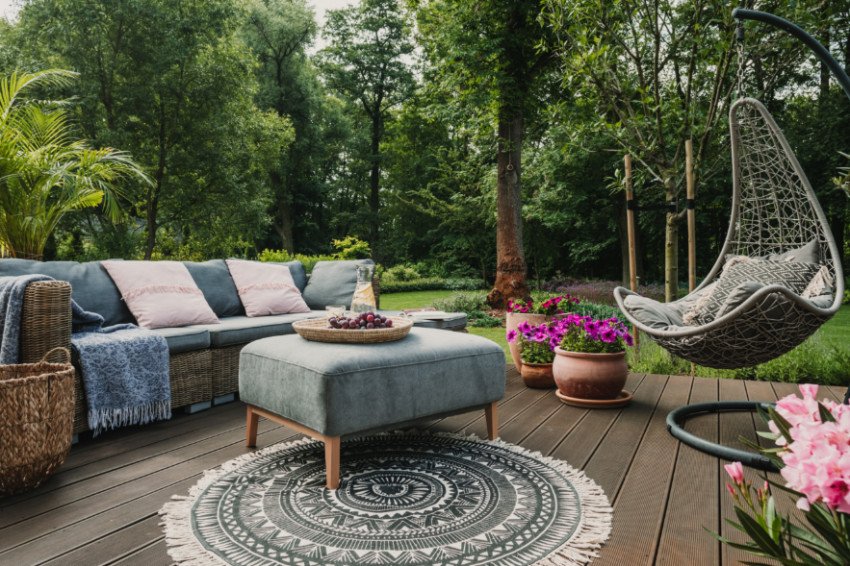
Designing An Outdoor Living Space Blog Eastwood Homes

Best Patio Design Ideas For Your Home Designcafe
See Also


